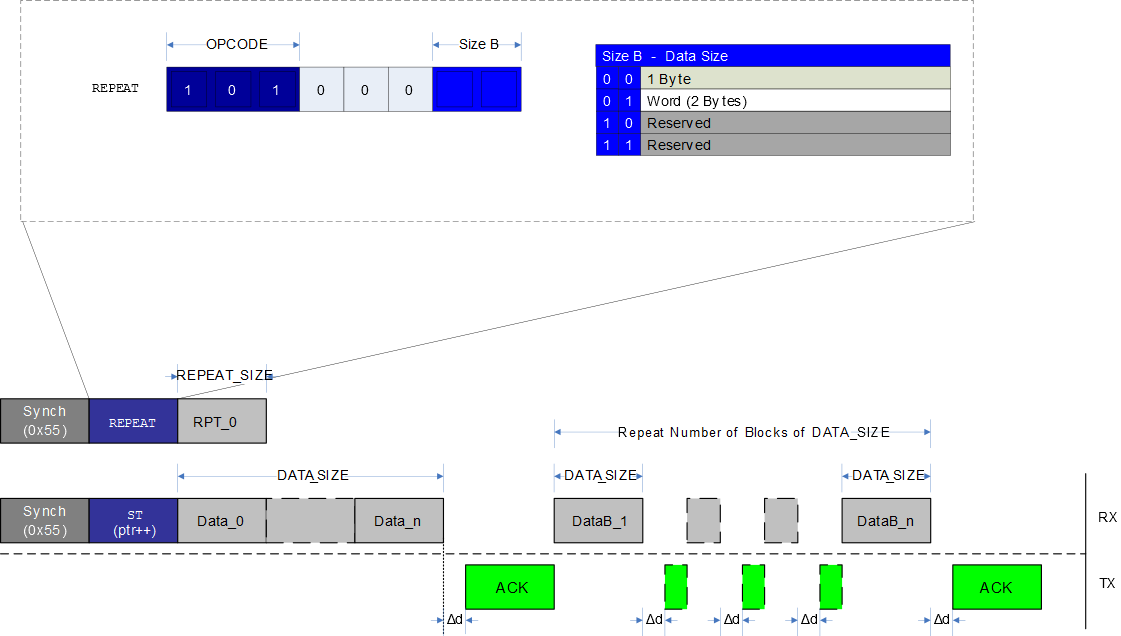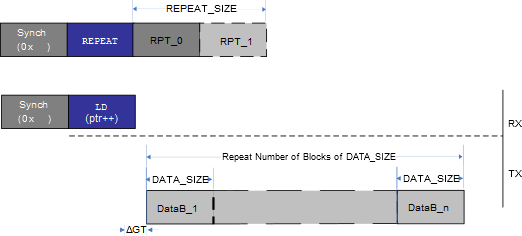The REPEAT instruction is used to store the repeat count value into
the UPDI Repeat Counter register on the DL layer. When instructions are used with
REPEAT, the protocol overhead for SYNCH and instruction frame can
be omitted on all instructions except the first instruction after the
REPEAT is issued. REPEAT is most useful for memory
instructions (LD, ST, LDS,
STS), but all instructions can be repeated, except for the
REPEAT instruction itself.
The DATA_SIZE operand field refers to the size of the repeat value. Only
up to 255 repeats are supported. The instruction loaded directly after the
REPEAT instruction will be issued for RPT_0 + 1
times. If the Repeat Counter register is ‘0’, the instruction will run
just once. An ongoing repeat can be aborted only by sending a BREAK character.
REPEAT
Instruction Operation used with ST Instruction
Figure 1 gives an example of a repeat operation
with an ST instruction using pointer post-increment operation. After
the REPEAT instruction is sent with RPT_0 =
n, the first ST instruction is issued
with SYNCH and instruction frame, while the next n
ST instructions are executed by only sending data bytes according to
the ST operand DATA_SIZE, and maintaining the
Acknowledge (ACK) handshake protocol.
REPEAT used with
LD Instruction
For LD, data will come out continuously after the
LD instruction. Note the guard time on the first data block.
If using indirect addressing instructions (LD/ST), it is recommended to
always use the pointer post-increment option when combined with REPEAT.
The ST/LD instruction is necessary only before the first data block
(number of data bytes determined by DATA_SIZE). Otherwise, the same
address will be accessed in all repeated access operations. For direct addressing
instructions (LDS/STS), the address must always be
transmitted as specified in the instruction protocol, before data can be received
(LDS) or sent (STS).